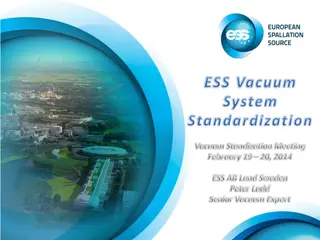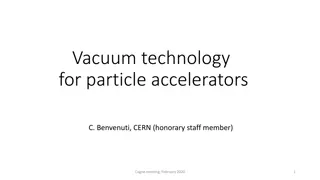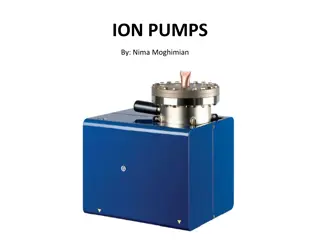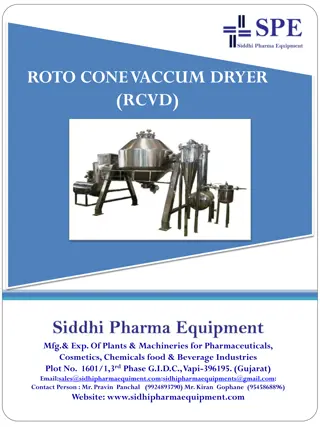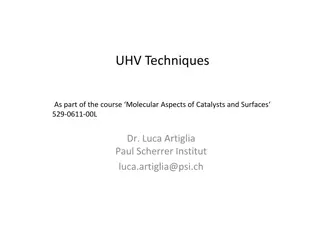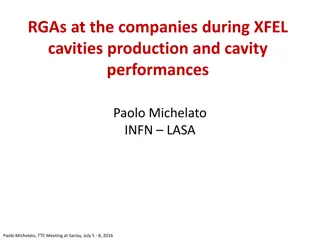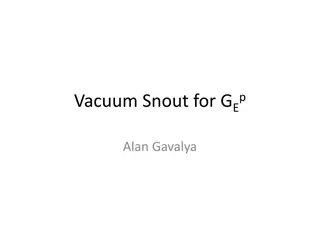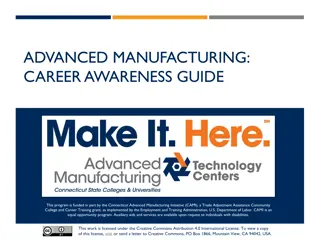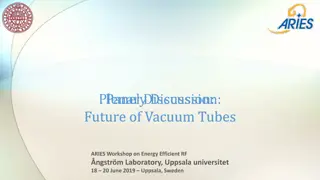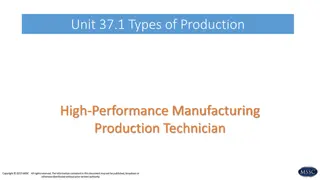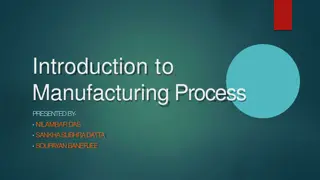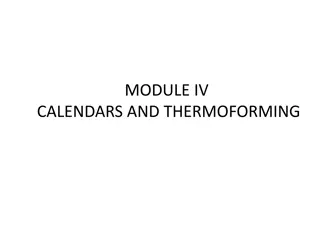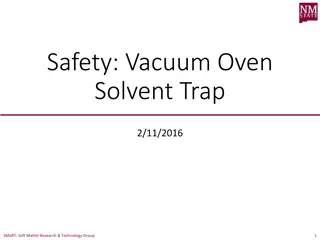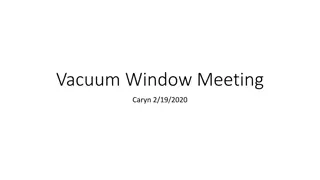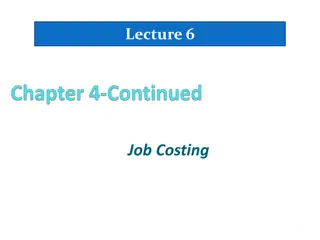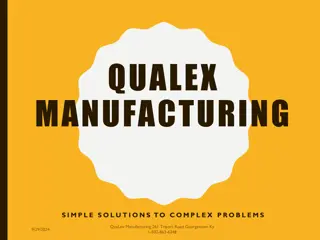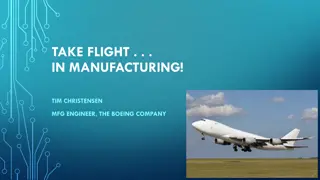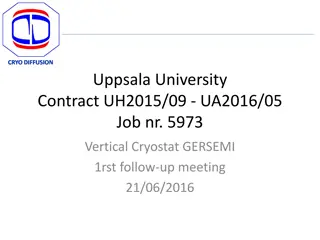Understanding High Vacuum Systems in Manufacturing
Explore the world of high vacuum systems, from defining vacuum pressure to understanding the ranges of vacuum levels. Discover the importance of vacuum safety protocols and get insights into basic vacuum system setups. Learn about the different levels of vacuum, safety measures, and real-world examples. This course is fully funded by a grant from the U.S. Department of Labor, providing valuable knowledge for those in high-performance manufacturing.
Download Presentation

Please find below an Image/Link to download the presentation.
The content on the website is provided AS IS for your information and personal use only. It may not be sold, licensed, or shared on other websites without obtaining consent from the author. Download presentation by click this link. If you encounter any issues during the download, it is possible that the publisher has removed the file from their server.
E N D
Presentation Transcript
Unit 66.1 Unit 66.1 High Vacuum Systems High Vacuum Systems High-Performance Manufacturing Production Technician
Define Vacuum Define Vacuum Vacuum is absolute zero pressure, which is less than atmospheric pressure. oAtmospheric pressure at sea level is 14.7 psi. oAbsolute Zero Pressure is 14.7 psi below atmospheric pressure. Absolute Zero Pressure has never been reached. Vacuum is also defined as the absence of matter.
Ranges of Vacuum Ranges of Vacuum Low Vacuum Medium Vacuum High Vacuum Very High Vacuum Ultrahigh Vacuum Extreme-Ultrahigh vacuum 1 105to 3 103Pascal 3 103to 1 10-1Pascal 1 10-1to 1 10-4Pascal 1 10-4to 1 10-7Pascal 1 10-7to 1 10-10Pascal (UHV) <1 10-10Pascal (EHV or XHV)
Basic Vacuum System Basic Vacuum System
Vacuum Safety Vacuum Safety Under no circumstances should a vacuum line with a cold trap be opened to air while the Dewar containing liquid nitrogen is in place as there is a potential for the formation of liquid oxygen in nitrogen- cooled vessels. Safe operating procedure oAll personnel who use high vacuum pumps with cold traps must be trained in operations oThe safe operating procedure must be readily available in all laboratories that use high vacuum pumps with cold traps
Vacuum Safety Vacuum Safety If it is suspected that liquid oxygen has condensed in a cold trap the operator must: oNotify all laboratory personnel oWear a face shield, fastened laboratory coat and leather gloves and carefully place an empty Dewar box and safety screen around the cold trap in situ. Do not attempt to remove oAllow system to stand overnight vented to air to slowly vaporize liquid oxygen Training in the use of high vacuum pumps with cold traps. It is recognized that training in the use of high vacuum pumps with cold traps occurs: oDuring third year practical classes oDuring safety induction training of honor students
High Vacuum System Example High Vacuum System Example https://www.youtube.com/watch?v=9v0r66N7mPw
This course is 100% funded by the MoSTEMWINs $19.7 million grant from the U.S. Department of Labor, Employment and Training Administration (TAACCCT). The product was created by the grantee and does not necessarily reflect the official position of the U.S. Department of Labor. The Department of Labor makes no guarantees, warranties or assurances of any kind, express or implied, with respect to such information, including any information on linked sites and including, but not limited to, accuracy of the information or its completeness, timeliness, usefulness, adequacy, continued availability, or ownership. This MoWINs product was created by North Central Missouri College and is licensed under the Creative Commons Attribution 4.0 International License


